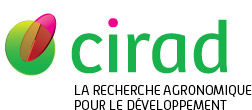Tritsch Isabelle, Sist Plinio, da Silva Narvaes Igor, Mazzei Lucas, Blanc Lilian, Bourgoin Clément, Cornu Guillaume, Gond Valéry. 2016. Multiple patterns of forest disturbance and logging shape forest landscapes in Paragominas, Brazil. Forests, 7 (315), 15 p.

|
Version publiée
- Anglais
Sous licence CC0 1.0 Sans restriction de droits pour le monde entier. Tritsch_Forests-2016.pdf Télécharger (5MB) | Prévisualisation |
Quartile : Q1, Sujet : FORESTRY
Résumé : In the Brazilian Amazon, multiple logging activities are undergoing, involving different actors and interests. They shape a disturbance gradient bound to the intensity and frequency of logging, and forest management techniques. However, until now, few studies have been carried out at the landscape scale taking into account these multiple types of logging and this disturbance gradient. Here we address this issue of how to account for the multiple logging activities shaping the current forest landscape. We developed an inexpensive and efficient remote sensing methodology based on Landsat imagery to detect and track logging activity based on the monitoring of canopy openings. Then, we implemented a set of remote sensing indicators to follow the different trajectories of forest disturbance through time. Using these indicators, we emphasized five major spatial and temporal disturbance patterns occurring in the municipality of Paragominas (State of Pará, Brazilian Amazon), from well-managed forests to highly over-logged forests. Our disturbance indicators provide observable evidence for the difference between legal and illegal patterns, with some illegal areas having suffered more than three explorations in fifteen years. They also clearly underlined the efficiency of Reduced Impact Logging (RIL) techniques applied under Forest Stewardship Council (FSC) guidelines to reduce the logging impacts in terms of canopy openings. For these reasons, we argue the need to promote legal certified logging to conserve forests, as without them, many actors mine the forest resources without any concerns for future stocks. Finally, our remote tracking methodology, which produces easy to interpret disturbance indicators, could be a real boon to forest managers, including for conservationists working in protected areas and stakeholders dealing with international trade rules such as RBUE (Wood regulation of European Union) or FLEGT (Forest Law for Enforcement, Governance and Trade).
Mots-clés Agrovoc : forêt, forêt tropicale, impact sur l'environnement, abattage d'arbres, déboisement, télédétection, imagerie, aménagement forestier, ressource forestière, gestion des ressources naturelles, durabilité, pratique illégale, exploitation forestière
Mots-clés géographiques Agrovoc : Brésil
Mots-clés libres : Forest degradation, Logging impacts, Disturbance patterns, Spatial and temporal indicators, Remote sensing, Landsat imagery, Forest landscape, Brazilian Amazon
Classification Agris : K10 - Production forestière
K70 - Dégâts causés aux forêts et leur protection
P01 - Conservation de la nature et ressources foncières
U30 - Méthodes de recherche
Champ stratégique Cirad : Axe 6 (2014-2018) - Sociétés, natures et territoires
Auteurs et affiliations
-
Tritsch Isabelle
 ORCID: 0000-0001-6421-1833
ORCID: 0000-0001-6421-1833
-
Sist Plinio, CIRAD-ES-UPR BSef (FRA)
 ORCID: 0000-0002-4565-4417
ORCID: 0000-0002-4565-4417
- da Silva Narvaes Igor, INPE (BRA)
- Mazzei Lucas, EMBRAPA (BRA)
-
Blanc Lilian, CIRAD-ES-UPR BSef (FRA)
 ORCID: 0000-0003-3605-4230
ORCID: 0000-0003-3605-4230
- Bourgoin Clément, CIRAD-ES-UPR Forêts et sociétés (FRA)
-
Cornu Guillaume, CIRAD-ES-UPR BSef (FRA)
 ORCID: 0000-0002-7523-5176
ORCID: 0000-0002-7523-5176
-
Gond Valéry, CIRAD-ES-UPR BSef (FRA)
 ORCID: 0000-0002-0080-3140
ORCID: 0000-0002-0080-3140
Source : Cirad-Agritrop (https://agritrop.cirad.fr/582627/)
[ Page générée et mise en cache le 2025-09-25 ]




